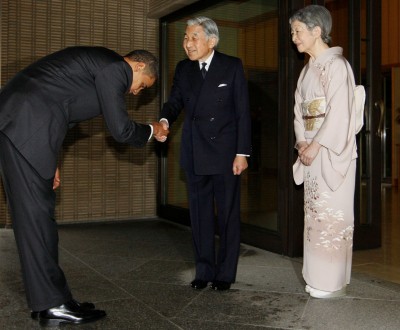Japanese Bowing: Etiquette and Meanings
Ojigi: Apologies and Greetings in Japan
The act of bowing (お辞儀 ojigi) has several meanings in Japan and can be performed on many occasions in everyday life. The bow fundamentally aims at showing respect or humbleness in social interactions:
- When being introduced to someone;
- For greetings (hello and goodbye), thanks and apologies;
- For jobs in the service industry or with contacts with customers;
- In religious rituals (especially Shinto);
- For various ceremonies;
- During sport events, martial arts tournaments, or artistic performances;
- When working as a train 🚅 staff in the Shinkansen.
The inclination angle, the duration and the number of bows depend in part of the intensity that one want or must show, but also and primarily of one’s own hierarchy level compared to the other person’s. The act bowing can be included in an almost casual, movement of the head, or performed into a more formal and rigid gesture, and even kneeling on the floor for a formal apology (very rare).
Japanese people themselves like to make fun of this habit:
What to do
Let us introduce a few examples of the Japanese bowing etiquette:
- 会釈 eshaku is a bow at a 15° angle, to greet people of the same hierarchical level;
- 敬礼 keirei is a bow at a 30° angle, to show respect to higher hierarchical level interlocutors;
- 最敬礼 saikeirei is a bow at a 45° angle, to greet a very important person, or to apologize for a fairly serious deed.
The bow is usually performed with arms along the sides of the body (for men) or hands joined at the front the legs (for women). When apologizing, the bow performer can say words of apology, such as: すみません sumimasen ("My apologies"), ごめんなさい gomen nasai ("I am sorry"), or 誠に申し訳ございませんでした makoto ni môshiwake gozaimasen deshita ("I sincerely apologize for [what I have done]").
What not to do
When bowing, it is considered impolite to watch one’s interlocutor in the eyes. The gaze should be directed as if looking on the floor a few meters away to follow the inclination of the upper body. The interpersonal distance must be considered as well in order to avoid an unfortunate bumping. Lastly, one do no shake hands while bowing, it is a common mistake made by foreigners, and even by former president Barack Obama himself when he met Akihito, Emperor Emeritus of Japan, in November 2009 (see front picture).
After all, some situations may look absurd from an outsider point of view, such as:
- Two persons bowing repeatedly at each other, without any visible sign they will to stop;
- People on the phone bowing repeatedly to their invisible interlocutor;
- Employees maintaining a bow as long as necessary, until the customer, who could not care less, has disappeared from view.


